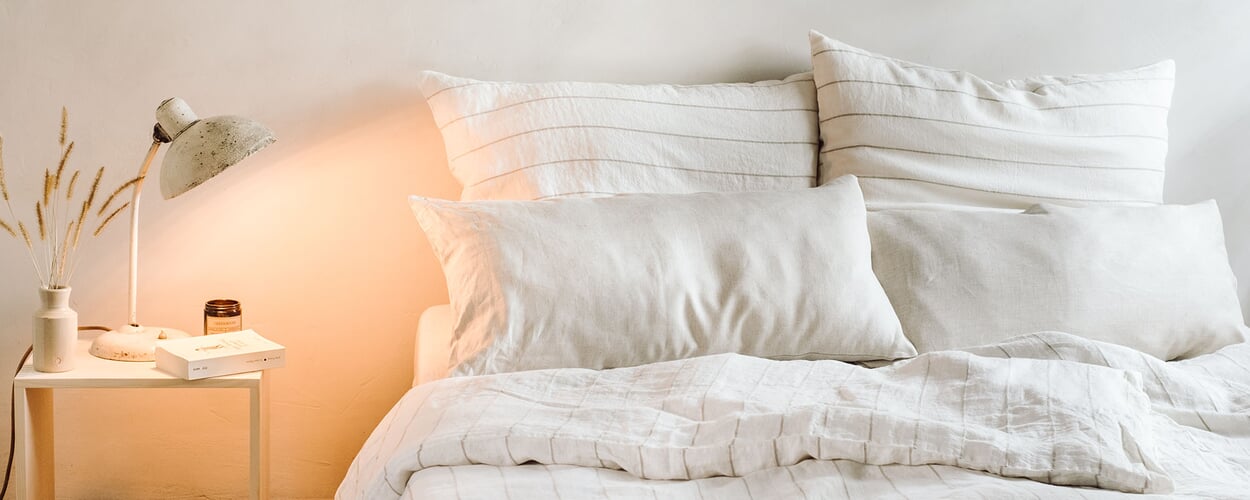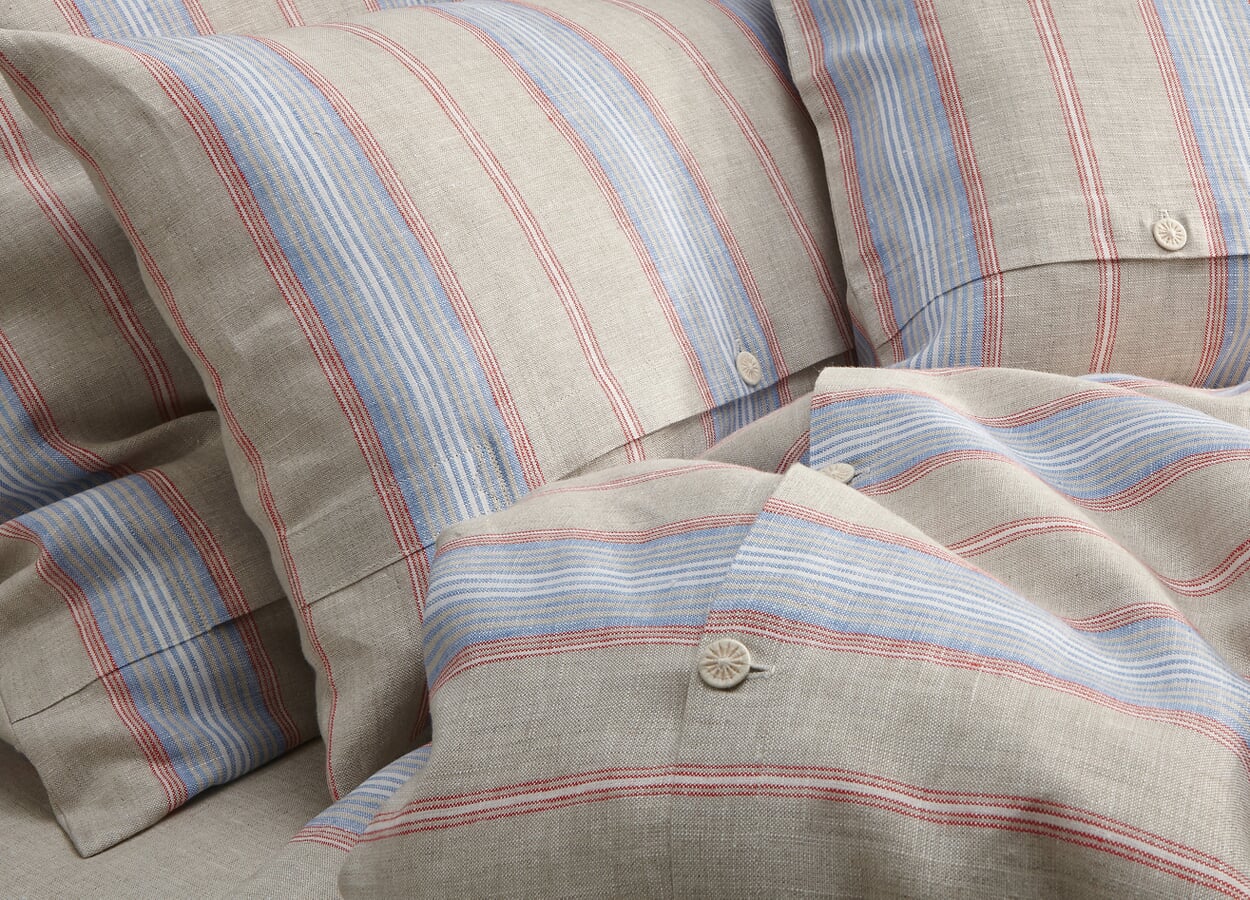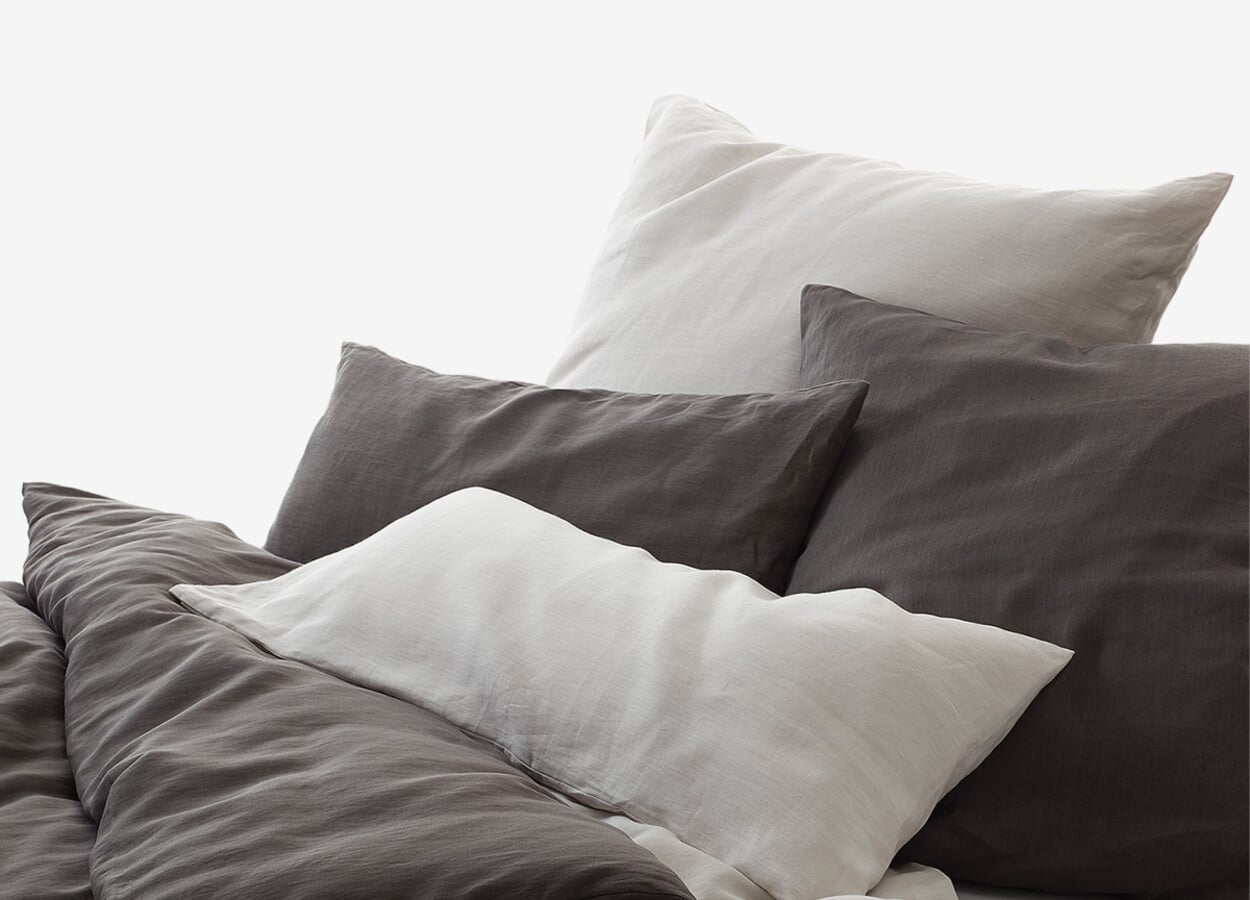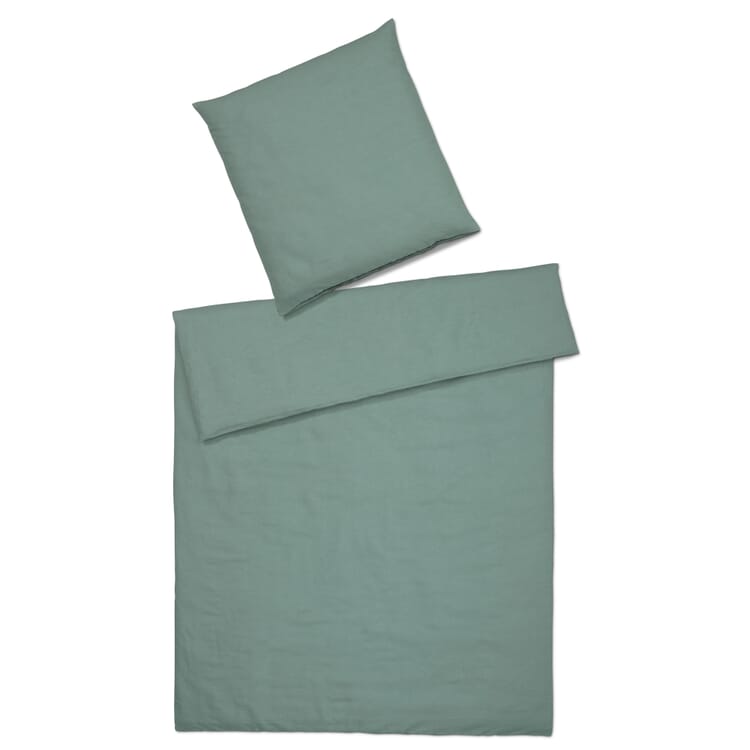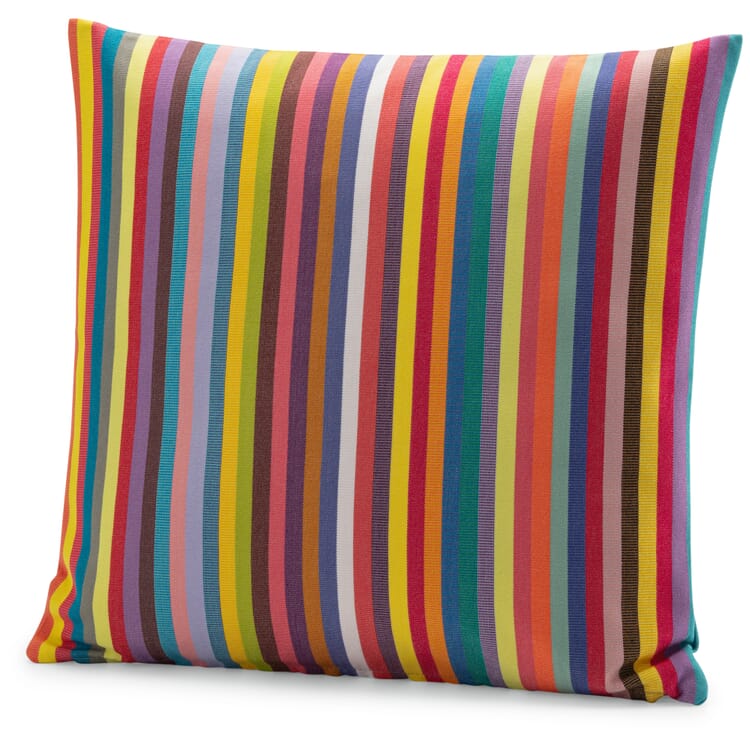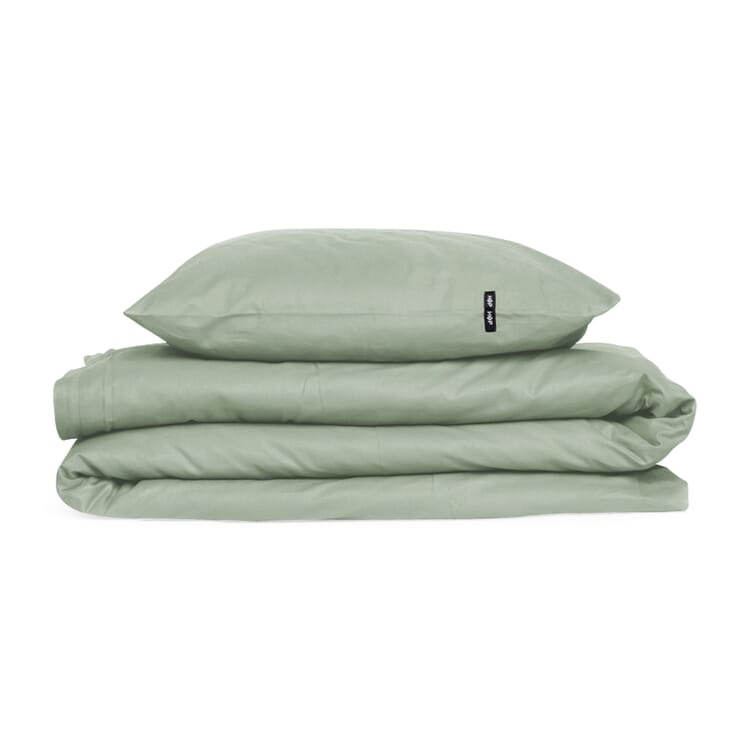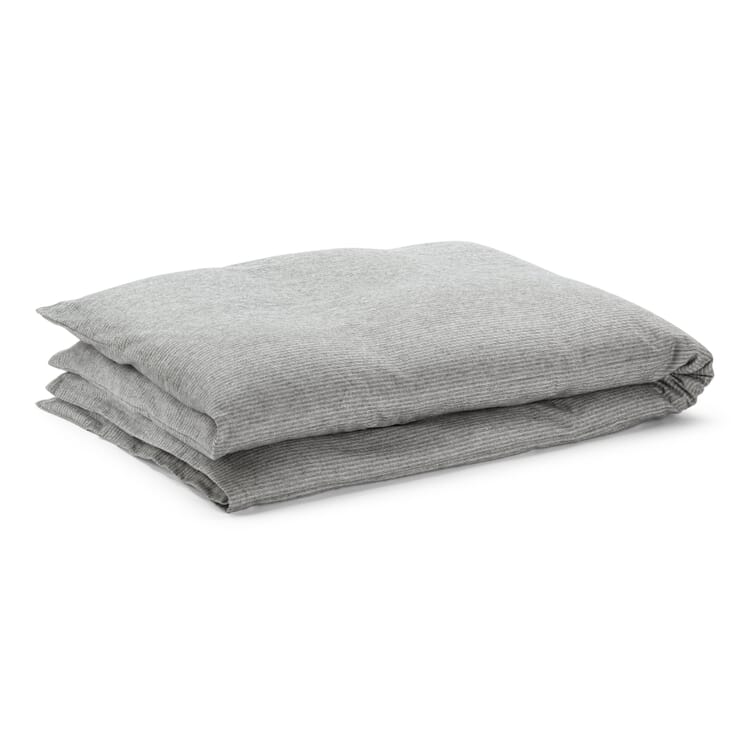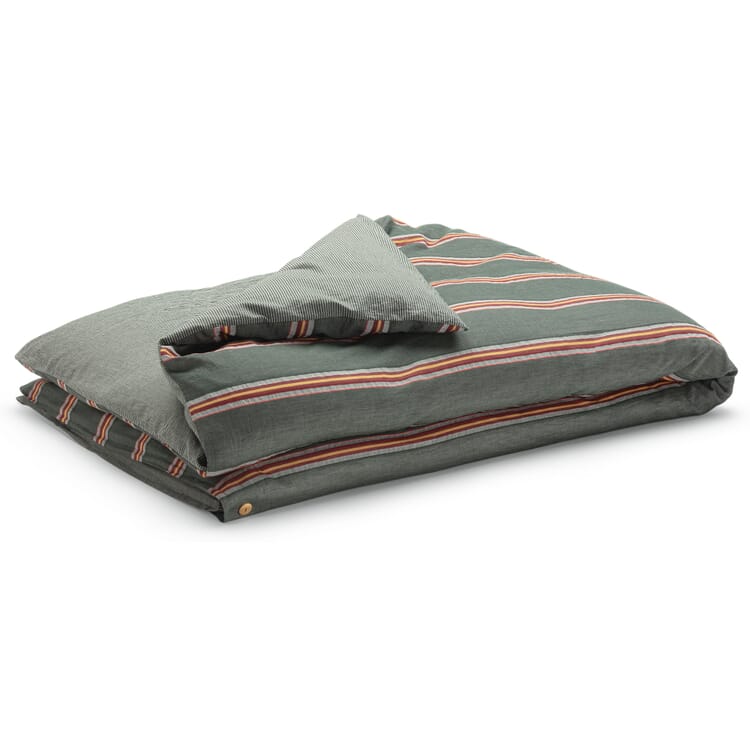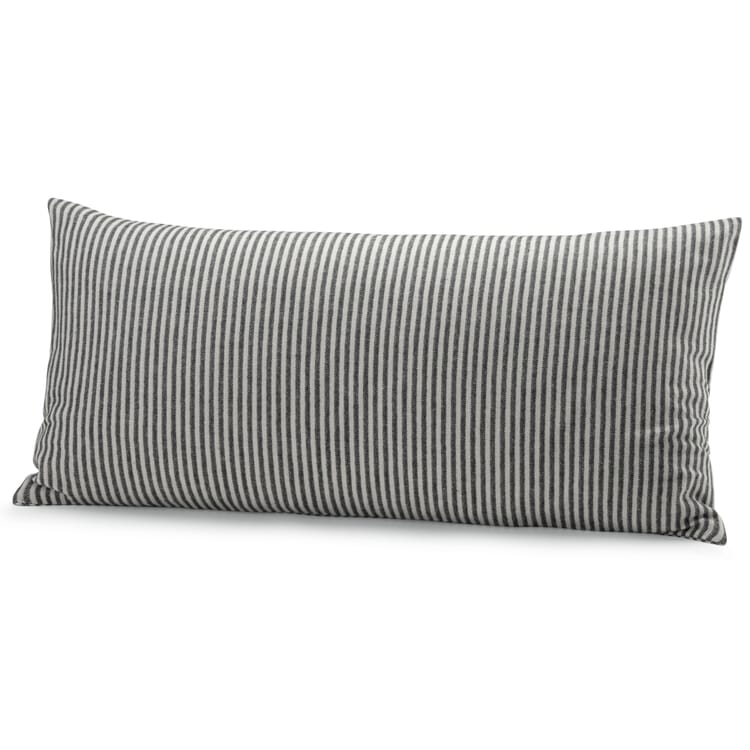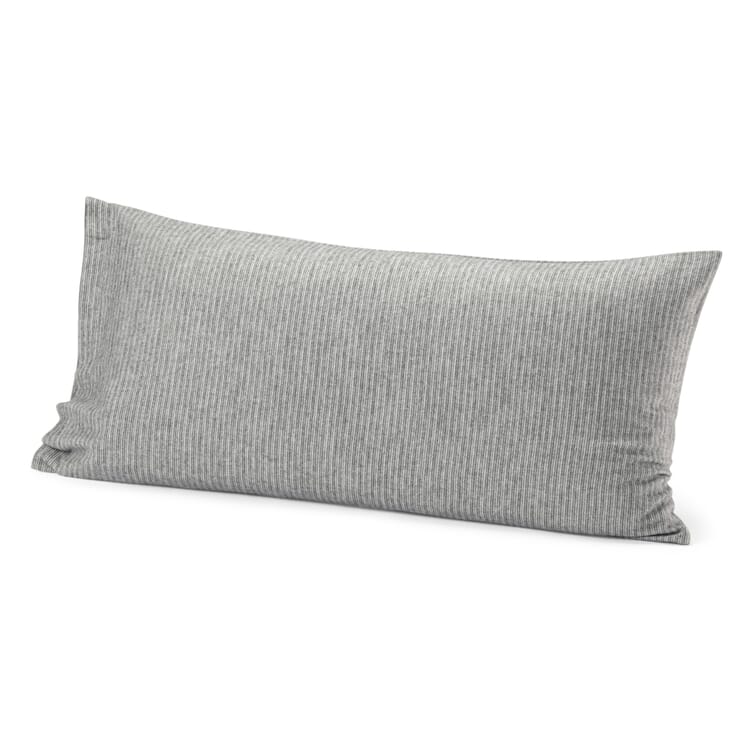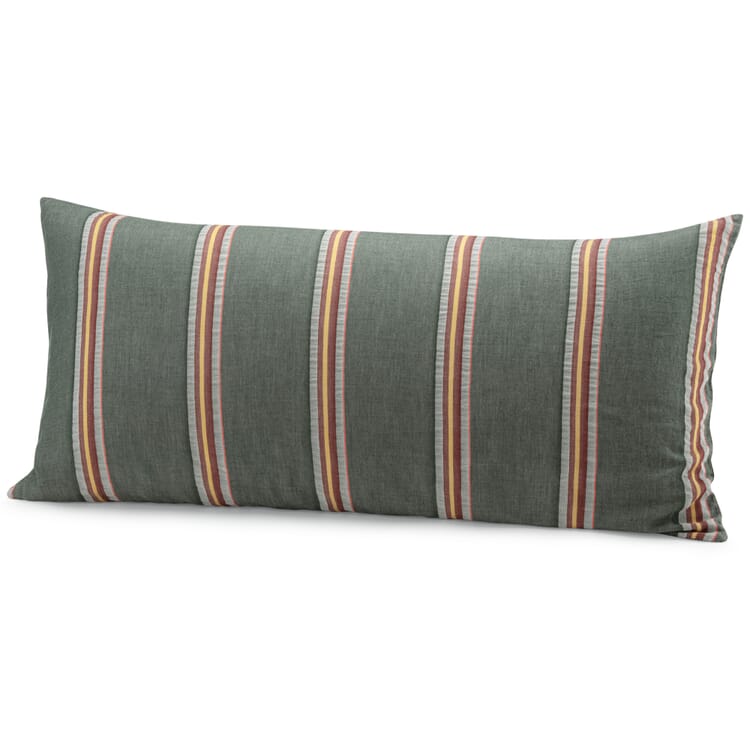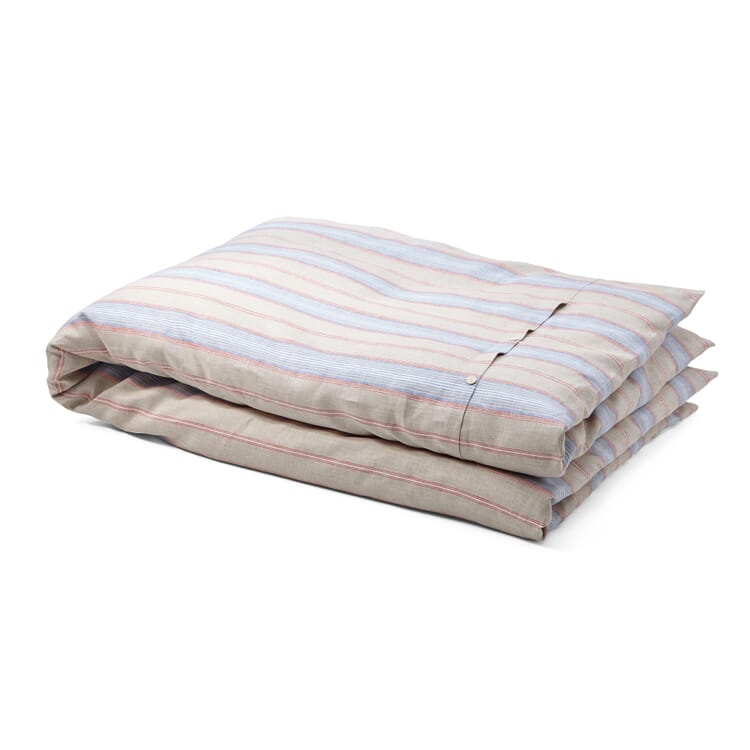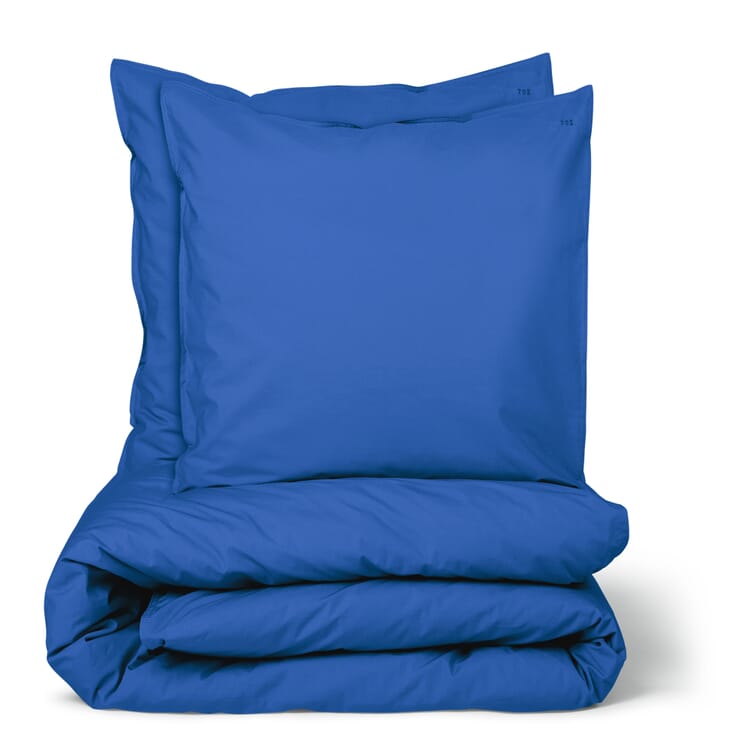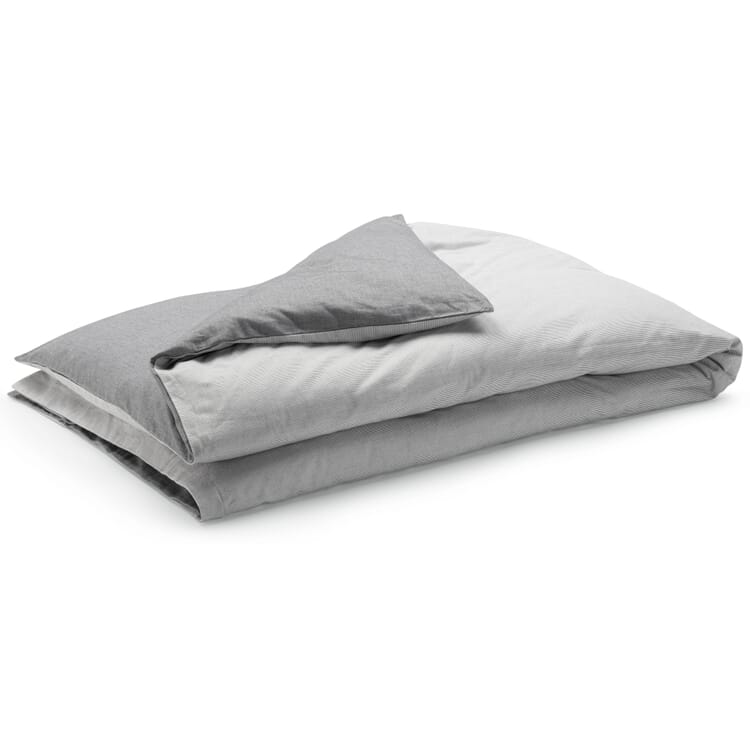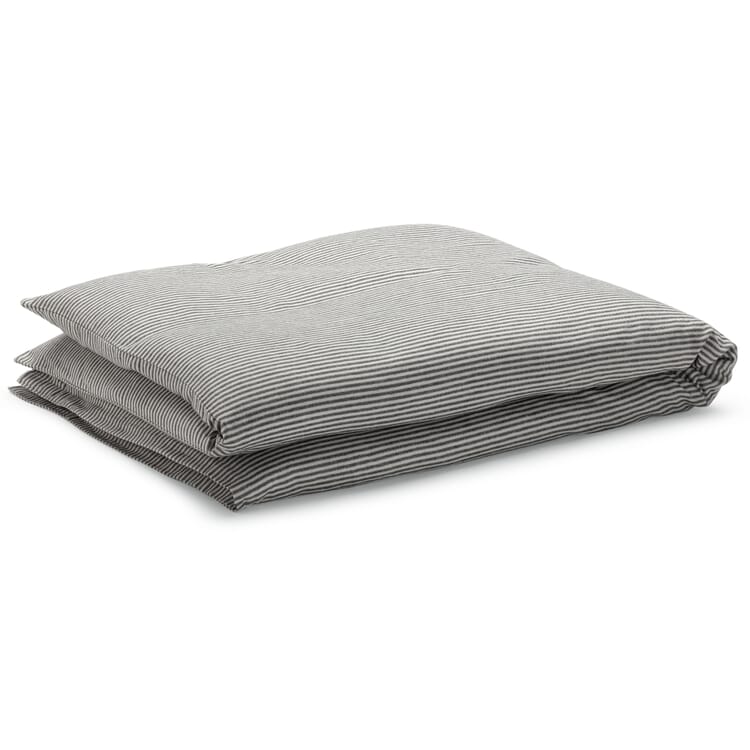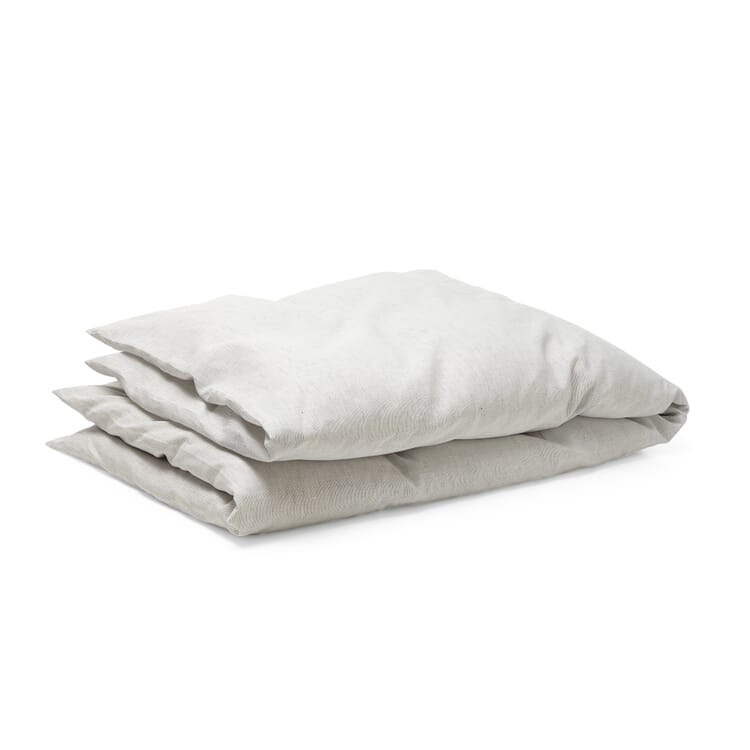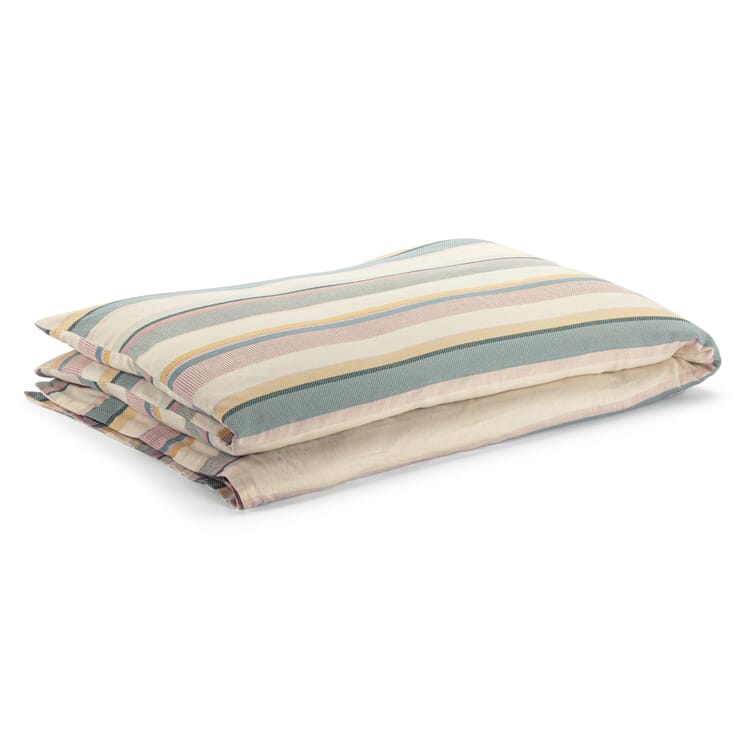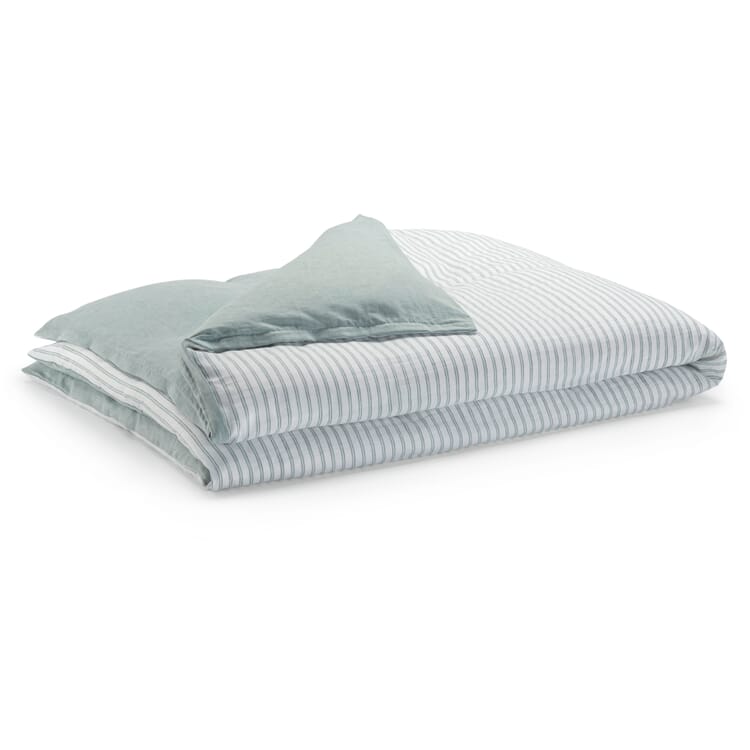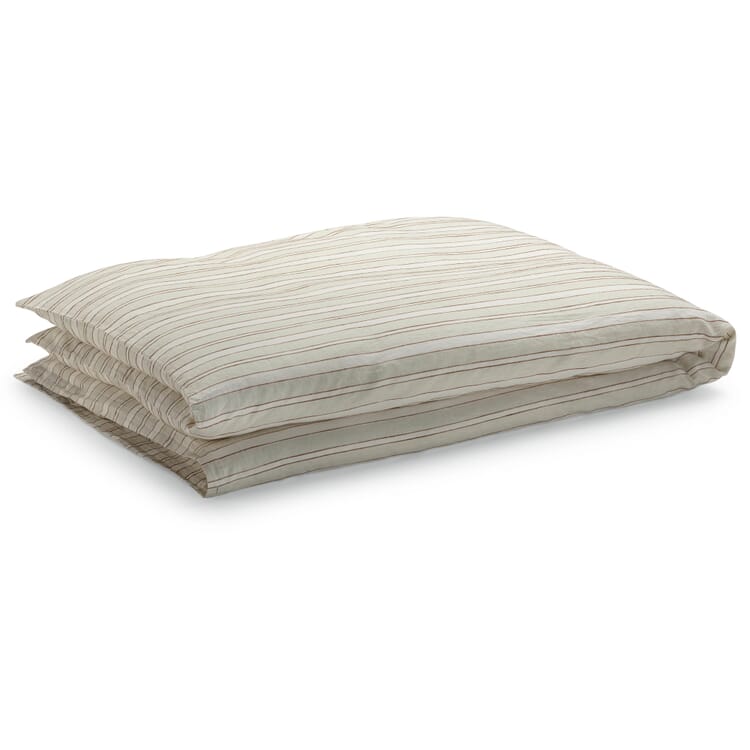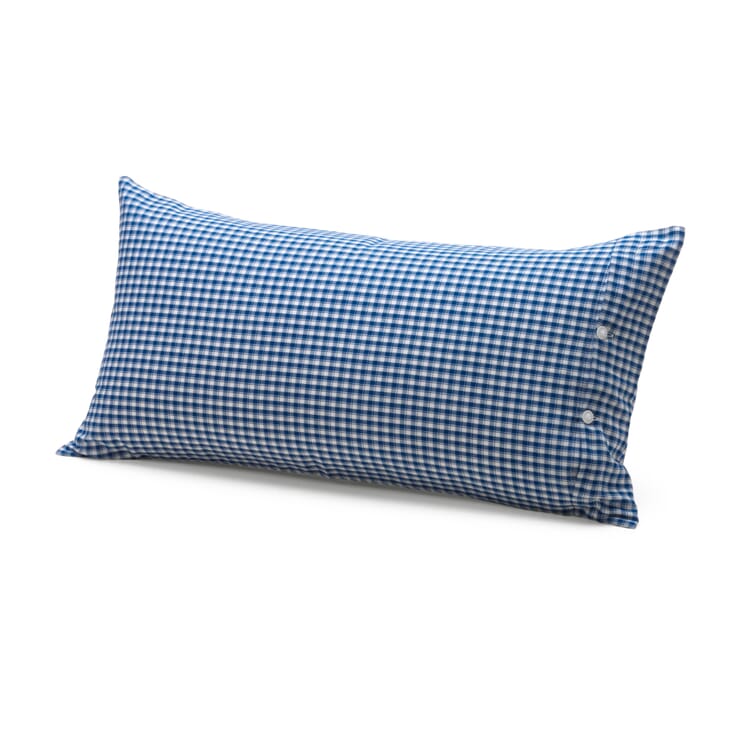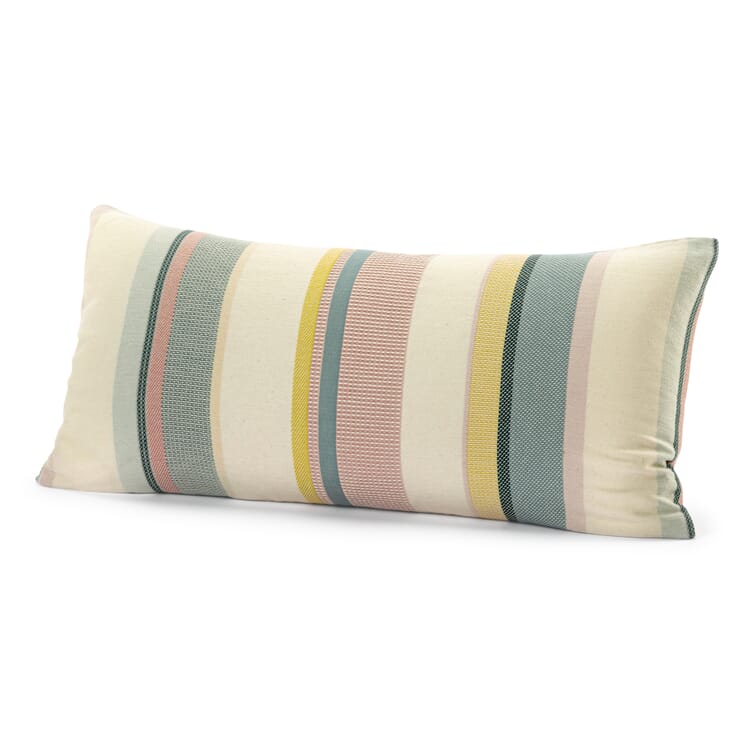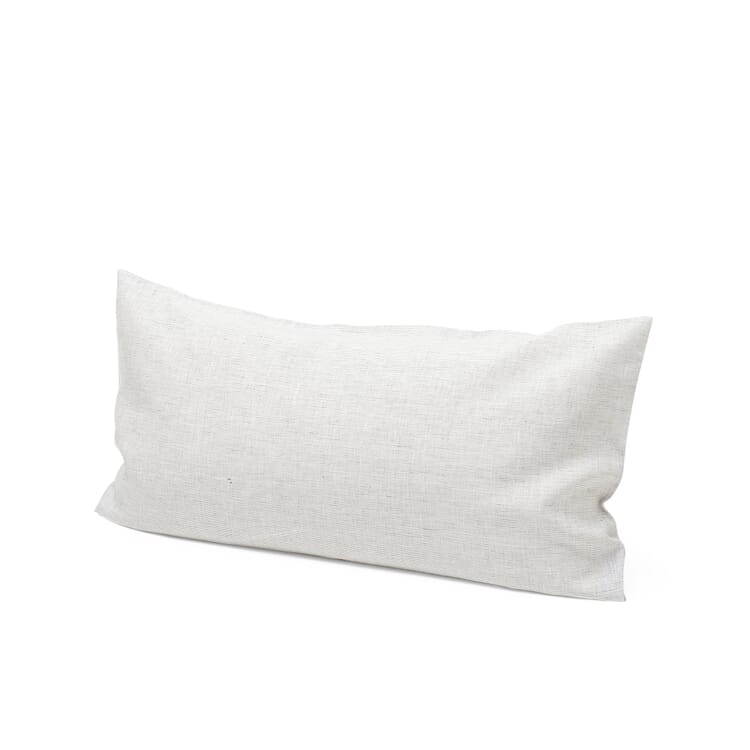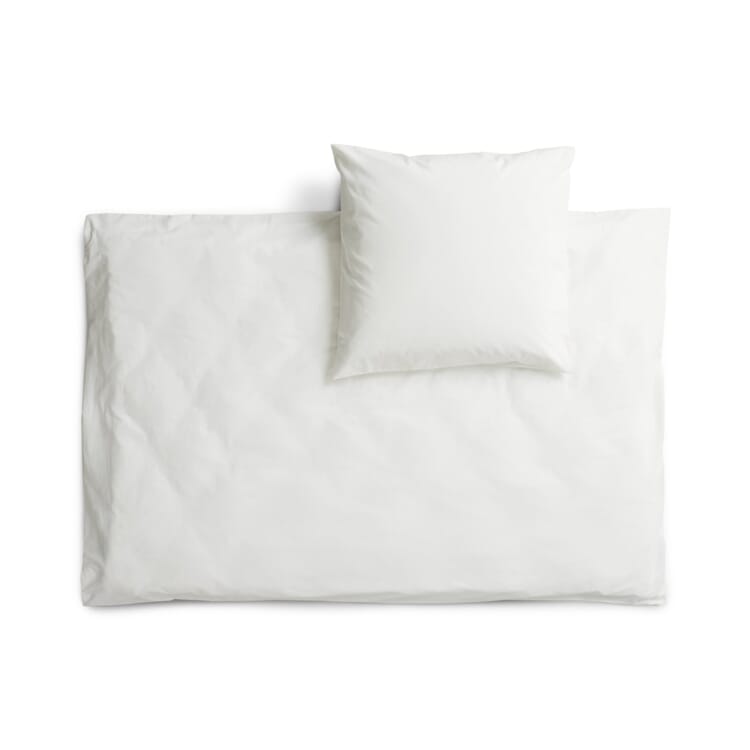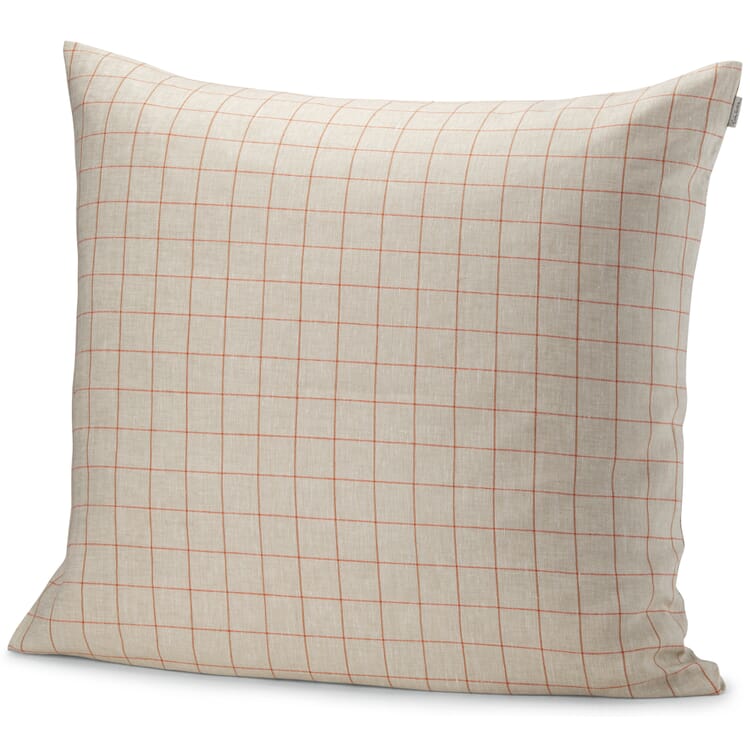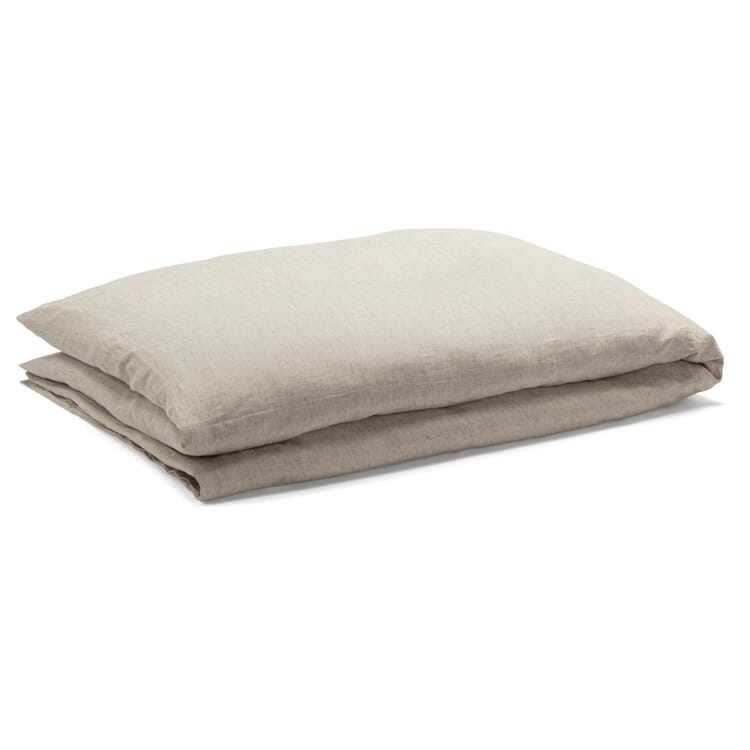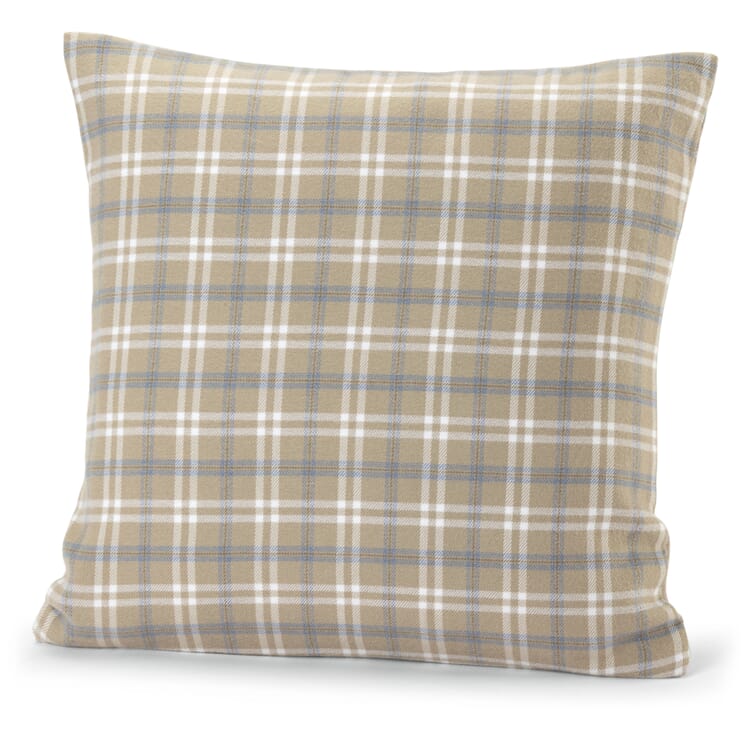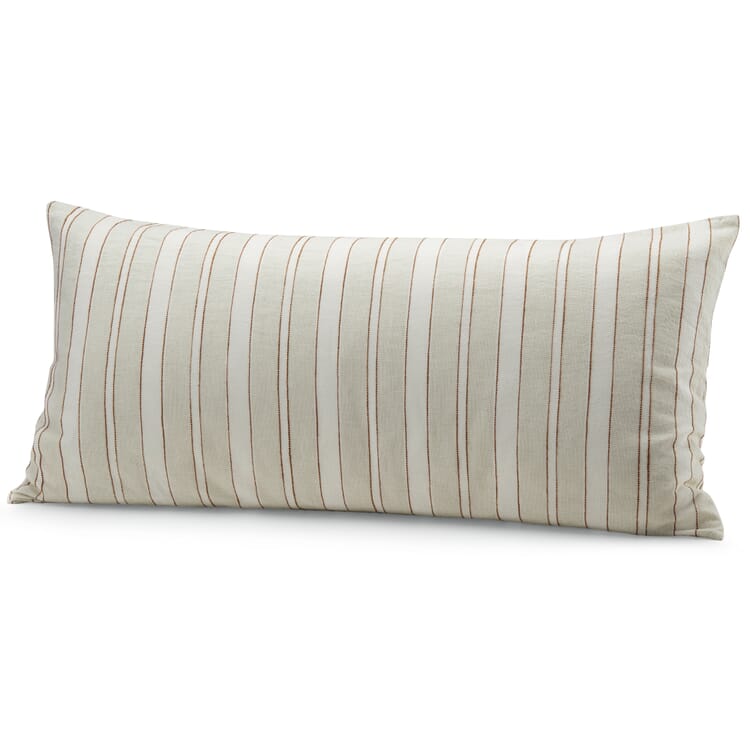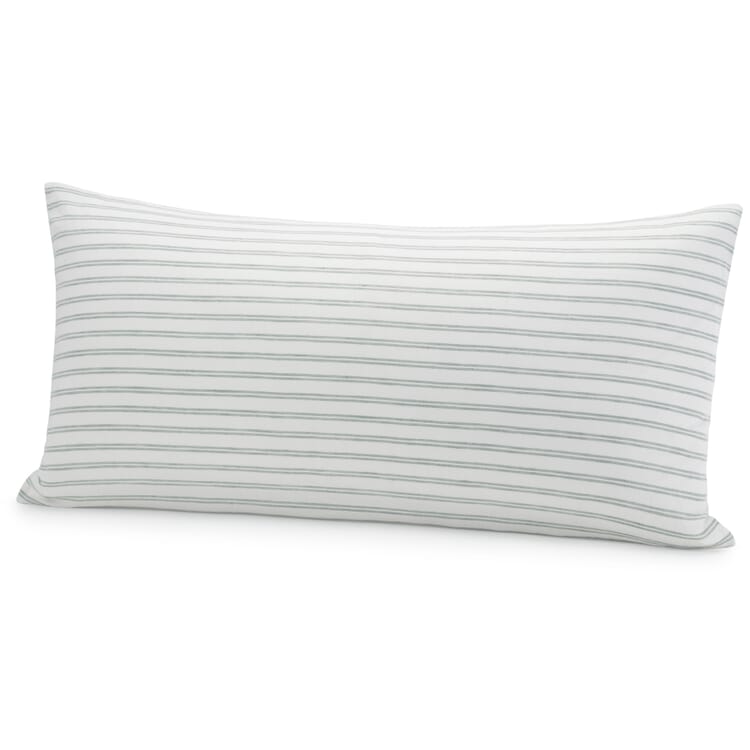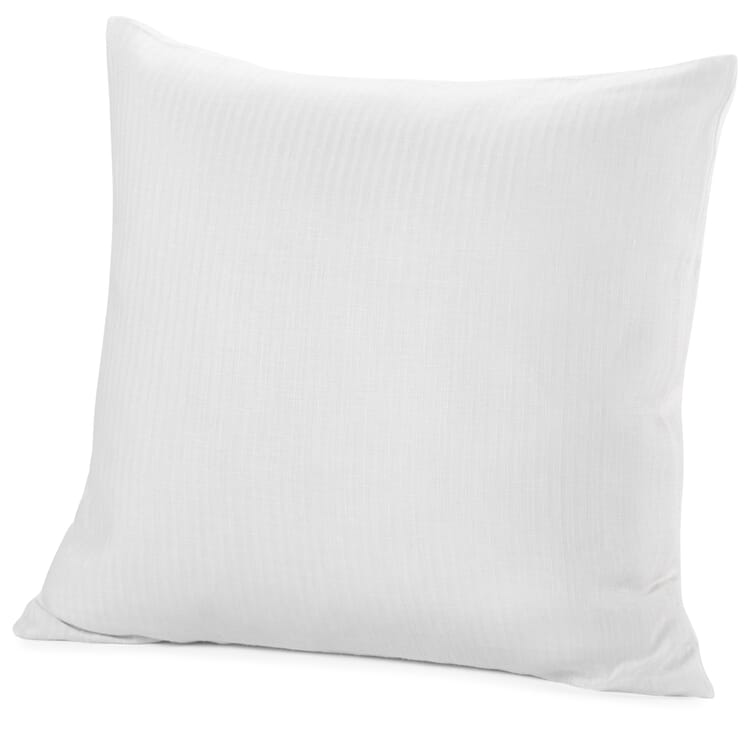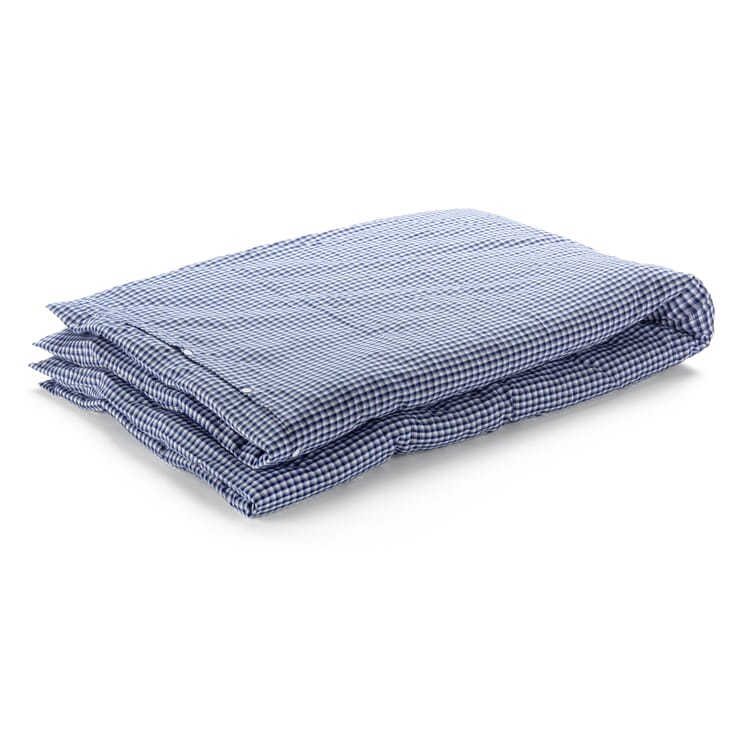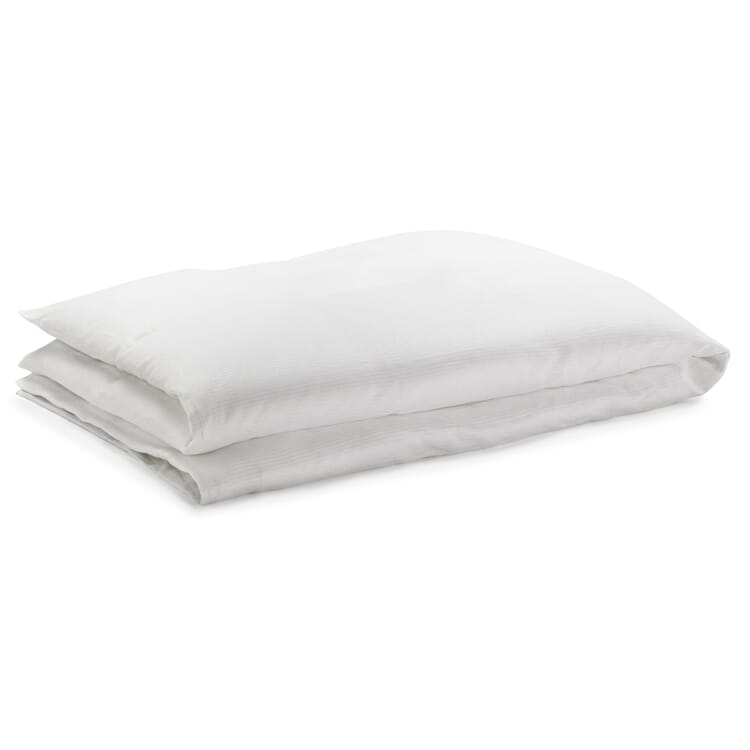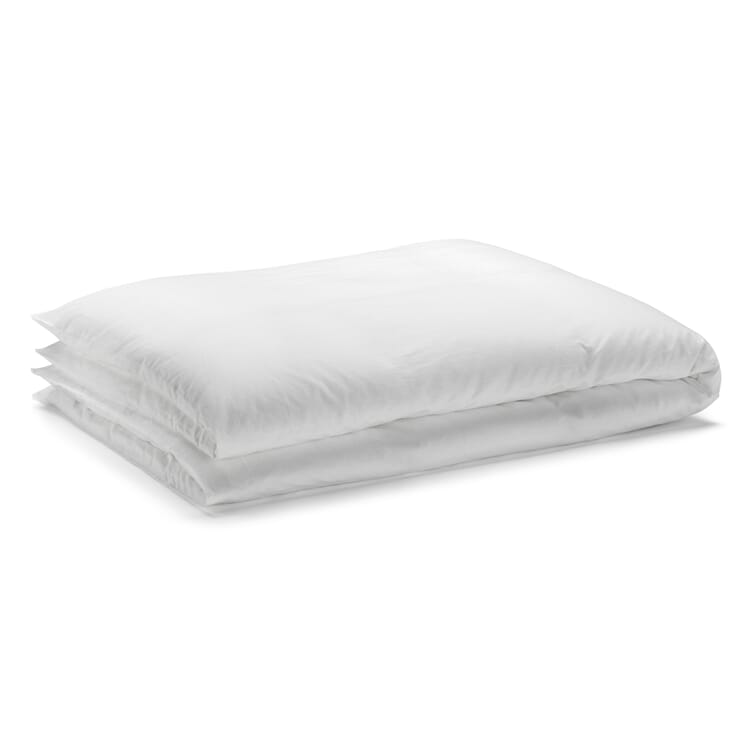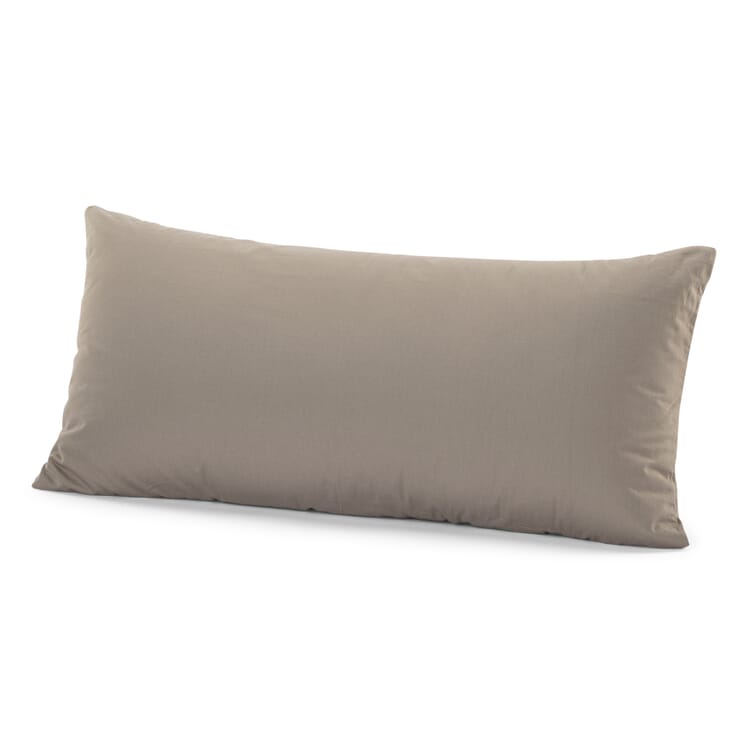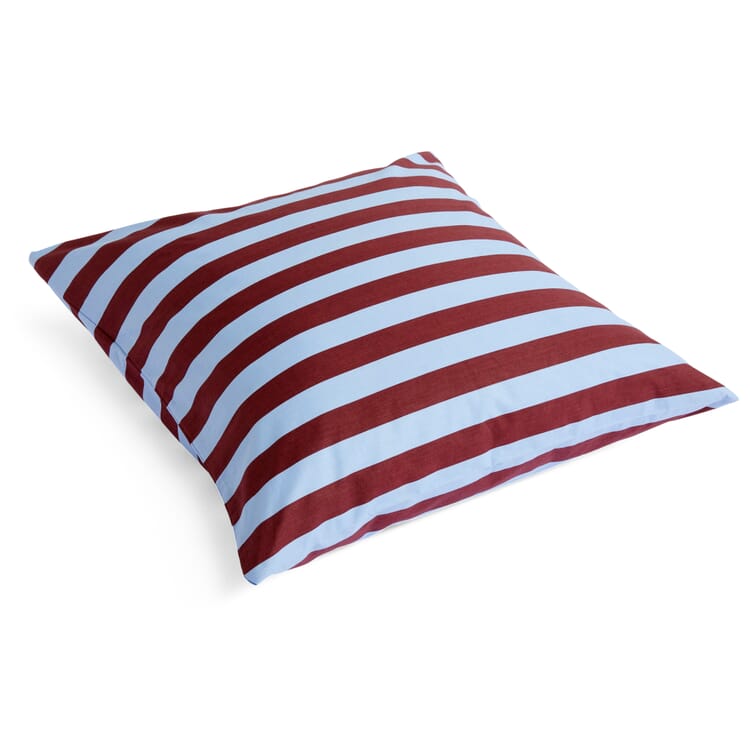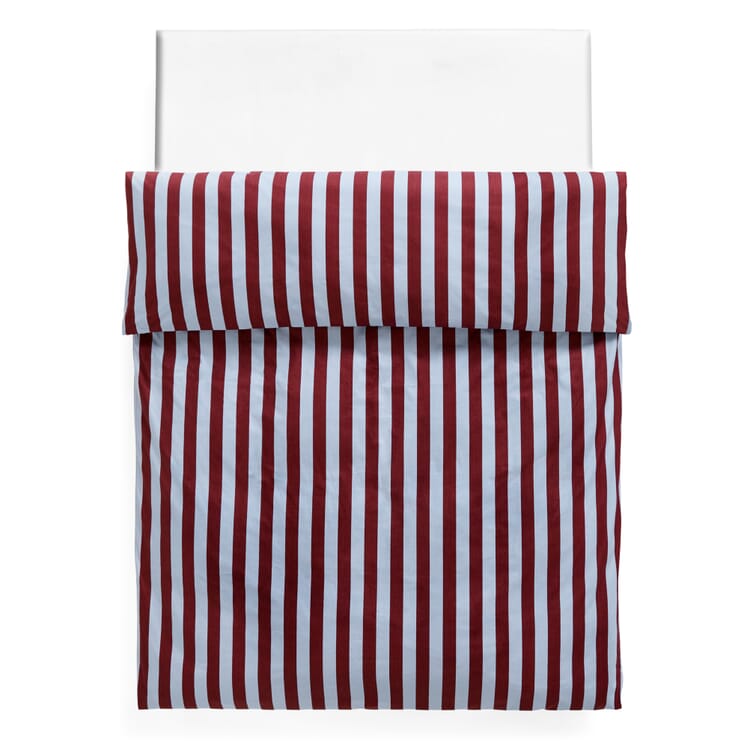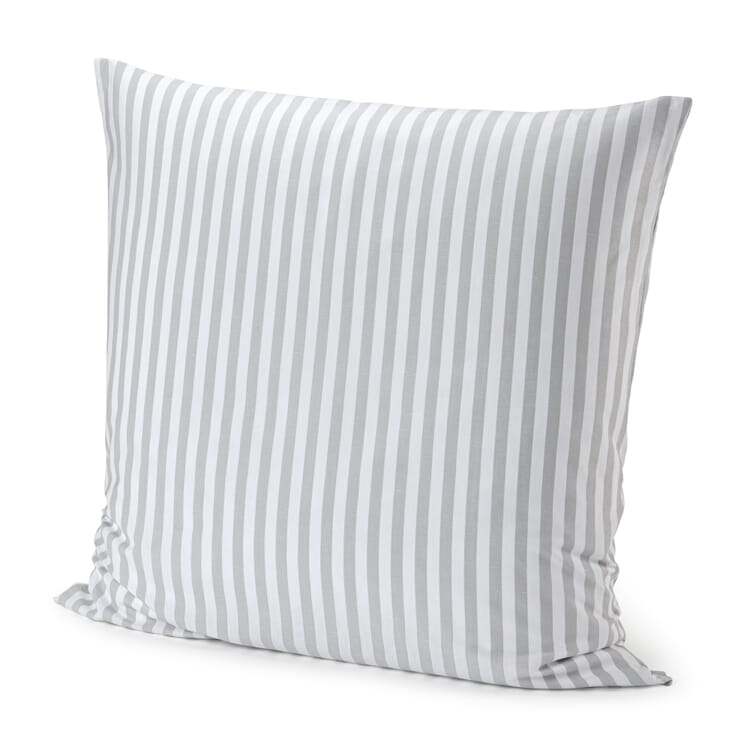Helpful tips
Sleep well, of course. With the right bedding
On average, you spend seven to eight hours in bed every day. At least when things are going well. That's a third of the day and therefore also a third of your life. The bed linen you use has a great influence on your well-being, and not just visually; the material and type of fabric in particular determine the sleeping climate and thus how refreshed you wake up in the morning. "As you make your bed, so you lie on it" - proverbs are based on accumulated life experiences and so you can definitely believe this condensed wisdom as well. Even if it hardly seems imaginable: a person releases up to 400 ml of sweat to his bed linen during sleep. So, on the one hand, it must be able to absorb moisture well and to wick it away again, and on the other hand, depending on the season and temperature, it must either warm or have a pleasantly cooling effect. And nothing is better at this than natural materials such as linen and cotton.
Linen bedding. Bringing the sheep in the dry
Before cotton came to Europe, linen was traditionally the material for bed linen. Thanks to the smooth surface of the flax fibers, the linen fabric has many advantages:
- Just like the fiber, the fabric is very smooth, thus skin-friendly, lint-free and easy to clean.
- Also the almost antistatic effect stems from the smooth plant of the fiber. Linen is dirt, dust and pollen repellent, making it ideal for allergy sufferers.
- The ability to absorb large amounts of moisture - up to 35% of its own weight, to be exact - and above all to wick it away quickly makes linen an effective alternative for people who sweat a lot.
- The constant release of moisture to the outside air also means that Linen bed linen is perceived as cooling in summer. Its ability to keep warm when dry is unaffected, however, so that linen can also be used well in winter.
- Good linen is extremely hard-wearing, tear-resistant and durable. Only to friction does it prove somewhat susceptible. Spinning or the use of a dryer are possible despite all this, but promote the typical linen crease look. Those who appreciate this characteristic can subject their linen bedding to such treatment without any problems, but those who prefer smooth linen should refrain from using a tumble dryer. Incidentally, linen is easier to iron when it is still a little soggy. A good middle course is therefore to take the bed linen iron-dry or even a little damp and smooth it directly afterwards.
Cotton bed linen. A real natural
With the triumph of cotton in Europe, linen was pushed out of most German beds due to its reduced availability. From then on, bed linen was mostly made of cotton fibers, which brought with them as a decisive difference that they could be processed into smooth as well as soft, almost velvety fabrics. In addition, cotton as a material for bed linen has the following properties:
- Just like linen, cotton is also very breathable and releases excess heat to the outside instead of accumulating it
- In addition, the fiber is extremely absorbent. The data on water absorption capacity vary (depending on whom you ask) between 45% and several times its own mass, but one thing is certain: It can become a real heavyweight
- In contrast to the domestic flax fiber, cotton does a little harder to get rid of the moisture again, but nevertheless: Who slightly to average much sweats, is also well advised with this fiber.
- Compared with linen, cotton is the significantly softer fiber. Cotton fabrics are therefore particularly pleasant on the skin. Other characteristics of bed linen made of cotton result primarily from the choice of fiber qualities and the type of processing. Because 100% cotton is by far not equal to 100% cotton.
By the line and by the thread. A little material science
Satin bedding, jersey bedding, percale bedding or even flannel bedding - all of them are made of 100% cotton (at least for us) and all of them are beneficiaries of their positive assets, which we have already listed above. Nevertheless, they could not be more different. Below, therefore, is a small portrait of our favorites.
Flanell:
- Just like beaver bedding, flannel is roughened on one or both sides by fulling. This creates an extremely soft, tightly closed fiber blanket with additional air pockets that effectively store heat
- Especially in winter, flannel is therefore the material of choice for those who freeze easily
- The thickness of the material further increases the absorbency of cotton.
- Flannel is woven from finer yarns than beaver, making it slightly lighter, but of higher quality: more uniform and dense at the same time.
Jersey:
- Jersey, unlike many other materials used for bedding, is not woven, but knitted or crocheted. It is knitted fabric, which makes it particularly elastic, easy to pull up and does not wrinkle. In addition, it is characterized by a high suppleness and skin-friendliness
- Jersey also scores in terms of care: Non-iron and suitable for tumble-drying, it is one of the most undemanding materials in our range
- Jersey is suitable for both winter and summer use
Percale:
- Percale is a fabric produced in plain weave, which is particularly fine and tightly woven, similar to a shirting fabric. Only from a thread density of 180 threads per inch - which corresponds to 2.54 centimeters - the fabric may be called percale.
- The fabric is comparatively strong and therefore resistant and durable, but at the same time light and soft to the touch.
- The surface of percale bedding is smooth and cool and thus offers an excellent sleeping experience, especially in summer.
Satin:
- Who appreciates an elegant look of his bed linen, will gladly reach for satin, because due to raw material and production, the fabric is particularly smooth, slightly shiny and falls flowing.
- Satin is traditionally produced in atlas weave, whereby the top and bottom offer a different image - usually: smooth on top and matte underneath.
- Especially in summer, satin is perceived as pleasantly cooling, but also shows itself in winter (after a short warm-up phase) as temperature balancing and heat retaining.
Dreamlike sleep. With the right bedding
If you think about your needs before buying bed linen and also take into account the seasonal temperature variations, you will be able to choose the right material and model with a light hand thanks to this overview. At least the bed linen should no longer cause you sleepless nights in the future. And those are already good prerequisites.

